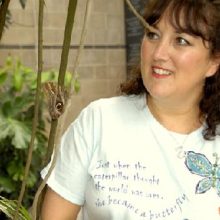We are pattern seeking creatures, and much of the quality of the life we live will be determined by how and why we seek patterns. Pattern seeking can lead us into delusion and dark obsession or inspiration and revelation depending on how we employ it.
If you look online, most of what you will find about pattern seeking is posted by ersatz skeptics who view it as a disreputable, superstitious tendency. The original Skeptics were a school of Greek philosophers who felt that their powers of observation were increased by not arriving at conclusions. In other words, they consciously held back from fixing on patterns which would lead to premature closure of the discovery process. Ironically, most so-called skeptics follow the opposite of this philosophy and are more properly called debunkers. They begin with a rigid pattern fixed in their minds — their unproven notion of what’s possible and what’s not (anything paranormal). Typically, they do research by proclamation and rather than investigate the unexplained they explain the uninvestigated.
Although their method of pattern seeking is intrinsically flawed, so also is the pattern seeking of many occultists and conspiracy folk. They too begin with patterns engraved in their minds and look for signs, symbols and synchronicities to confirm their belief systems. The so-called skeptics are true believers in a negative (a set of apriori assumptions of what’s not possible), and the foolishly obsessed are true believers in a positive. The ersatz skeptics conflate science for scientism, and the deluded obsessives are seduced by the trickster aspect of the unconscious.
When studying certain things, for example, the efficacy of a new medicine, rigorous research methodology and statistical analysis are called for in order to avoid confirmation bias. However, in other cases, the scientific method does not and cannot work — e.g. choosing which politician to vote for. You should still engage rigorous reality testing, however, and consider the reliability of various sources of information. In still other cases — sifting through the ambiguities of a relationship, or choosing a life path, for example — there is a high, irreducible degree of subjectivity. Global intuition needs to play a leading role in selecting among possible patterns. In such cases, methodology is not the predominant factor so much as a qualitative truth sense. The only method is to wait for such deeper, intuitive recogntion and not allow a mind-ego alliance to create premature closure on a more superficial answer. (see “The Hierarchy of Psychic Functions” in A Guide to the Perplexed Interdimensional Traveler)
In still other cases, it may be life-enhancing to choose to impose a pattern onto a phenomenon where other patterns are not only possible but some are even more statistically likely or “realistic.” I discuss this approach in Interpretive Magic.
Using an oracle, such as this one, is also a case of pattern seeking. For the phony skeptic, oracles are purely apophenia, finding patterns among random data. Oracular advice is so general, they would argue, that you can always make something fit your situation. Even if this were the case, the general advice in oracles could still be valuable. Whichever part of the general advice was most relevant to you would be highlighted by your intuition so that you would, in effect, be your own oracle. On the other side of the spectrum, there are those who will treat every message from an oracle as if it were the voice of God. From the point of view of my philosophy, Dynamic Paradoxicalism, it would be best to have a sliding or dynamic relation to the poles of this spectrum. As I’ve written in the Zap Oracle Instructions and History, my experience with all oracles is that there are zones of time where it seems like it could all be random and other zones where reading after reading will have incredible precision and relevance.
Ultimately, it is your own discernment, your own sense of truth, that has the responsibility of deciding which patterns you are going to select. For this reason I believe the highlighter is more sacred than any text (see The Path of the Sacred Highlighter). Your highlighter (what your truth sense highlights) is the authority, and not the text, oracle, guru, governmental, academic or scientific agency. Consider this a propitious time to wield your pattern recognition highlighter with all your powers of discernment.
Seeing Blindspots
For more on phony skepticism, and the trickster aspect of the unconscious, see: Carnival 2012 — a Psychological Study of the 2012 Phenomenon and the 22 Blindspots and Pitfalls of Esoteric Research
Interpretive Magic
For more on poor pattern seeking see: Reality Testing is Politically Incorrect
Dynamic Paradoxicalism — the anti-ism, ism
The Path of the Sacred Highlighter
Ambiguity
This card was inspired by Ellen Santistevan’s multimedia art project shown above. Here is the artist’s statement:
“Pareidolia: a psychological phenomenon involving vague or random stimulus being perceived as significant or distinct. Common examples: seeing images of animals or faces in inanimate objects, or hearing hidden messages in reverse recordings.”
Apophenia: the experience of seeing meaningful patterns or connections in random or meaningless data. In statistics, it is known as a Type I error.
According to Peter Brugger of the Department of Neurology, University Hospital, Zurich, “The propensity to see connections between seemingly unrelated objects or ideas most closely links psychosis to creativity … apophenia and creativity may even be seen as two sides of the same coin.” (from the Skeptic’s Dictionary)
**********************************
Am I Pathological?
Forms lie in wait in the splash of paint, in the patina of metal, in the fold of a cloth, or the tufts of a rug. They wait until I am open to seeing them. I can go for months, looking and not seeing, until one day everything is right and the forms leap out at me. Once I have seen them, I cannot UN-see them.
In the same way, I feel surrounded by words that are waiting for me to write them down. When I am ready to receive them, they come and demand a page to land on. For what are words if not preserved somehow? Evanescent, nebulous; they skitter away if I try too hard to grasp at them, but return insistently to this conduit, my hand, my pencil.
*********************************
maybe the words
desire
to be remembered
desire more of a permanence
than a passing thought
or half-heard intake of breath
written, there is a chance
that, perhaps, you
might come across them again
some day
when you
weren’t
even looking
for
them
 ZapOracle.com home to the free 720-card Zap Oracle
ZapOracle.com home to the free 720-card Zap Oracle






